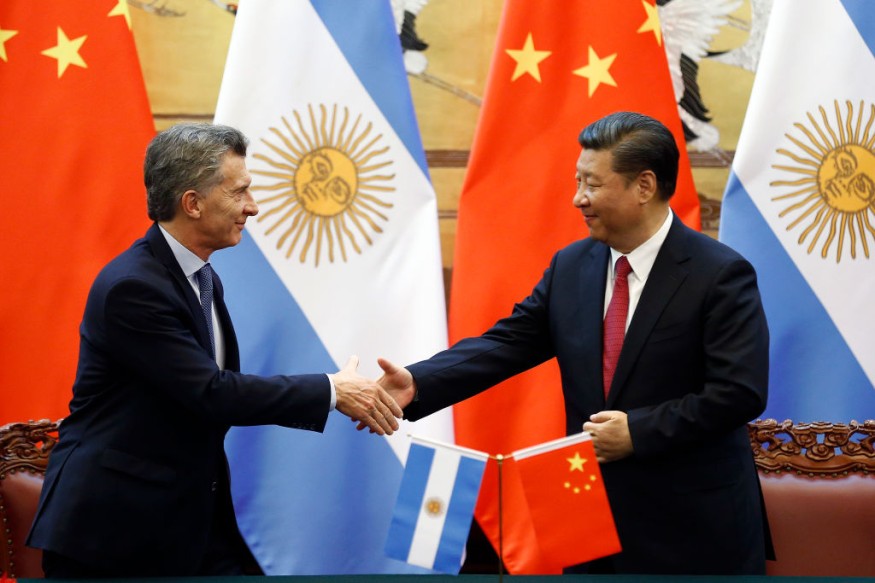China's Growing Latin America Influence Concerns Lawmakers

Even if China's economic relations with Latin American countries have grown substantially over the past two decades, China's growing influence in the area has worried the United States.
As security officials and lawmakers continue to keep an eye on developing trends in Beijing's expanding global partnerships, the threat China poses to the U.S. has been pushed to the forefront of Americans' minds, Fox News reported.
U.S. defense officials and lawmakers are increasingly concerned about China's stealthy growth in the southern hemisphere, with Republican Florida Rep. Mara Elvira Salazar calling attention to the region's mounting security dangers just last month.
"[Chinese President] Xi Jinping has been to Latin America more times than President Obama, Trump, and Biden combined in the last ten years," Salazar told lawmakers in a House Foreign Affairs Committee hearing.
"The Chinese are not here for trade. They're here for war," she added, stating that the number of Latin American countries, including Argentina, Venezuela, and Bolivia, gave China a military footing in the region.
She cited China's supply of weapons and military equipment to the region over the past decade and claimed that Argentina also considers constructing a Chinese fighter jet factory.
READ NEXT : China is Building Big in Latin America
Former National Security Council Senior Director: "We Woke Up One Day and the Chinese Were in Our Neighborhood"
Jorge Arguello, Argentina's Ambassador to the United States, dismissed Salazar's charges as baseless and "absurd" earlier this month, according to Express.
But Salazar is not the only one concerned about China's expansion into South America.
Former Senior Director for Western Hemisphere Affairs at the National Security Council, Juan Cruz, stated: "We have no clue what takes place there, and neither do the Argentinians.
"We believe that [China's] using that as a mechanism to monitor our space activity and otherwise be a collector of intelligence."
He added: "We woke up one day, and the Chinese were in our neighborhood."
While China's aerospace and military industries are certainly present in South America, it is not all they do there.
Based on projections made by the International Economic Forum, two-way trade between Beijing and Latin America increased from $12 billion in 2000 to $315 billion in 2020, a 26-fold increase.
Over the following decade, China-Latin America relations in commerce are projected to rise, eventually surpassing $700 billion annually by 2035.
On the other hand, in light of rising worries over corruption, narrowing legal boundaries, and other foreign financial incentives, the United States has relaxed its grip on Latin America in recent decades.
U.S. Senior Military Commanders See China's Action as a Threat
Security threats to the United States are rising because of recent Chinese actions, such as financing a $3 billion container port, establishing a space monitoring station near the Straits of Magellan, and purchasing lithium mining operations in three South American nations, according to senior military commanders speaking on Wednesday, per USNI News.
Gen. Laura Richardson, head of Southern Command of the United States Army, appeared before the House Armed Services Committee and called China's actions a "relentless march" to displace the United States as a regional leader.
According to Richardson, she must ensure that the Panama Canal, Strait of Magellan, and Drake Passage remain accessible to ships.
State-owned corporations and Chinese companies are extending their presence in the hemisphere, and Richardson is worried about their dual-use possibilities.
She cited the Chinese Space Agency station in Argentina as an example, designed to detect satellites and research the moon's dark side, which could potentially be used for targeting.
The risk is too significant to dismiss, she added.
Northern Command Air Force General Glen VanHerck testified before a congressional committee that China is responsible for 80 percent of Mexico's telecom infrastructure.
Even surveillance balloons can be a threat in some situations. The two commanders claimed that China shot down their observation balloon as it made its way across the Atlantic Ocean from Latin America.
Twenty-one countries in the Caribbean region and the area of responsibility of the United States Southern Command are participating in China's Belt and Road infrastructure building plan.
For VanHerck, Chinese companies like Huawei are widely used in 3G and 4G networks across the Americas, serving as the primary provider in 24 countries.
Recently, a Brazilian company and Huawei inked an MOU to begin developing a 5G network prototype in a Brazilian city.
READ MORE : Joe Biden Promises to Hold Those Responsible for Silicon Valley Bank Mess 'Fully Accountable'
This article is owned by Latin Post.
Written by: Bert Hoover
WATCH: How China's BRI is Shaping the Future of Latin America - From Cyrus Janssen
Subscribe to Latin Post!
Sign up for our free newsletter for the Latest coverage!
© 2026 Latin Post. All rights reserved. Do not reproduce without permission.















